Every military commander will agree that communication is the key to any successful mission or in-field operation. One of the most vital components for military command and control is the ability to communicate seamlessly, offer support and share information for mobile personnel and groups deployed in remote locations anywhere, at any time.
Effective COTM systems ensure intelligence information reaches personnel on time, and surveillance data is properly relayed, even when users are on the move. Leaders can make better tactical command decisions when they receive reconnaissance observations on time, in turn increasing military strategic advantages.
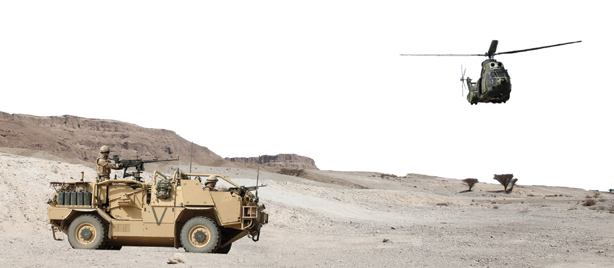
A large number of organizations are now working on improving mobile communications capability beyond the line of sight to enhance their Communications-On-The-Move (COTM) capability. This primarily involves portable satellite technology, specifically relating to military and defense land vehicles, maritime or airborne platforms. The core principle behind COTM is that any moving vehicle on land, air or sea equipped with a SATCOM system is able to establish and maintain communication with a satellite.
COTM Land and Airborne technologies require specialized equipment that have tight weight and size specifications with extreme form factors as well as extra design capabilities and standards including electromagnetic interference, vibration and shock. This is because military operations are growing to be asymmetric and non-linear, requiring LIVE responses to changes that occur during a mission, or on the battlefield. As the demand for improved on-ground communication increases, state-of-the-art modern military mobility equipment users look towards SATCOM manufacturers to implement innovations in SATCOM technology to deliver data to and from hostile environments without interruption.
Stringent Specifications
In this regard, Norsat has been a pioneer in developing SATCOM solutions as our LNBs and BUCs are ideal for COTM and airborne applications. Besides great performance, our signature products like the ATOM Series of block upconverters and solid state power amplifiers (BUCs & SSPAs) are tested to meet the most stringent standards like MIL-STD-461 (EMI/EMC), MIL-STD-704A (airborne), MIL-STD-1275D (ground), MIL-STD-810G environmental (shock, vibration, salt fog, blowing rain sand) and RTCA DO-160 (standards for commercial aircrafts).
The engineering team is working on multiple development projects for COTM and airborne applications for the ATOM Ka-band BUC & SSPA and ATOM Ku-band GaN BUC. Another aspect that we see driving potential growth is the opening of the company’s manufacturing facilities in the United States, delivering Norsat’s signature North-American quality, which has been well-received by our customers in the military and defense contractor communities.
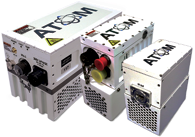
SWaP Considerations
Size, Weight, and Power (SWaP) are the three crucial physical attributes that must be considered for COTM systems. Minimizing weight and size while maximizing power are competing aims, and optimizing this balance is at the heart of BUC/SSPA design. The advantages of low SWaP in COTM come from lighter, smaller BUCs that are easier to position, operate, access and service. In airborne COTM applications, the constraints of restricted space and fuel consumption margins call for small system size and low weight. Contrastingly, in maritime COTM weight is less important than space, as the constraints of radome mounting impose compact form factor requirements, in addition to thermal and vibration considerations.
In the case of land-based COTM, space is even more limited in vehicles and tanks, and heavy weight reduces speed and performance. Output power vs Power consumption (Power efficiency) is a factor for every single COTM application, since there is a fixed level of usable power in a moving vehicle, irrespective of being airborne, land-based or maritime. All other factors being equal, the lightest and smallest components outputting highest power with the lowest possible consumption, is what customers are ultimately seeking to implement.
Future Trends
COTM applications for military purposes require more power to operate independently while on the move. But, adding more power to a unit also results in more heat, which creates the need for more components in order to cool it down. Catching the wave with this trend, Norsat has developed GaN BUCs with excellent thermal management and more output power. For example, Norsat’s 80W Ku GaN ATOM BUC is 62 percent lighter and 70 percent smaller than competing products in the industry, weighing just 2.3 kg.
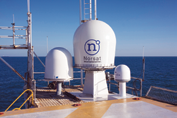
Norsat Maritime. 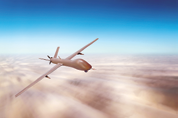
When it comes to terminals, Norsat’s premier maritime COTM offering is the MarineLink Naval Series. They are designed to meet the new-age demanding requirements of modern navies as outlined in the following Military Standards:
• Mechanical Shipboard Vibration: MIL-STD-167-1A
• High-Impact Shipborne Shock: MIL-STD-901D
• Military EMI / EMC: MIL-STD-461G
Because of these rigorous and standardized certifications, Norsat is able to provide our military customers with demonstrated, high-capacity communications systems, designed to perform under even the most extreme maritime environments. Additionally, terminals in Norsat’s MarineLink Naval series have been certified for use on the Military Wideband (WGS), CE0678, Intelsat and Anatel networks.
These maritime terminals have unique features that benefit COTM applications like fast tracking speeds (90 deg/s) for accurate and dependable signal lock and 3-axis operating platform for WGS reliable operations even in rough sea states (up to Sea State 6). Additionally, they also feature a built-in motor brake, shock absorber, and wire-rope isolator for longevity and reliability, and unlimited azimuth for precise tracking and ease of cable management.
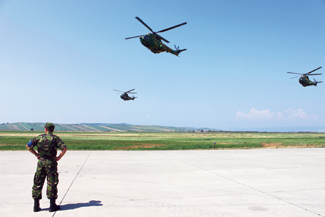
In the near future, SATCOM manufacturers will need to pay attention to COTM parameters such as ground user uplink power, transponder gain, ground user antenna aperture size and satellite downlink power. Organizations have begun research into mobile antenna pointing and stabilization to provide robust solutions by offsetting the reduction in gain and using numerous wider beam antennas.
COTM Land and Airborne Technologies will witness further development over the next two years as customers expect better SWaP, increased need for manufacturing demands such as FOD, FAI requirements, more standard requirements, higher temperature and lower temperature specs than the usual, altitude specs and tighter integration with
the antenna.
Over the past 40 years, Norsat products have been used to support vital mobile communications for not just ISR (intelligence, surveillance and reconnaissance), but also battlefield communications, supply logistics, search and rescue, UAVs (Unmanned Aerial Vehicles) and disaster site video.
Norsat stays committed to providing customers with the best solutions for all their COTM applications where situational awareness and life-saving information is required in a moment’s notice..
www.norsat.com


